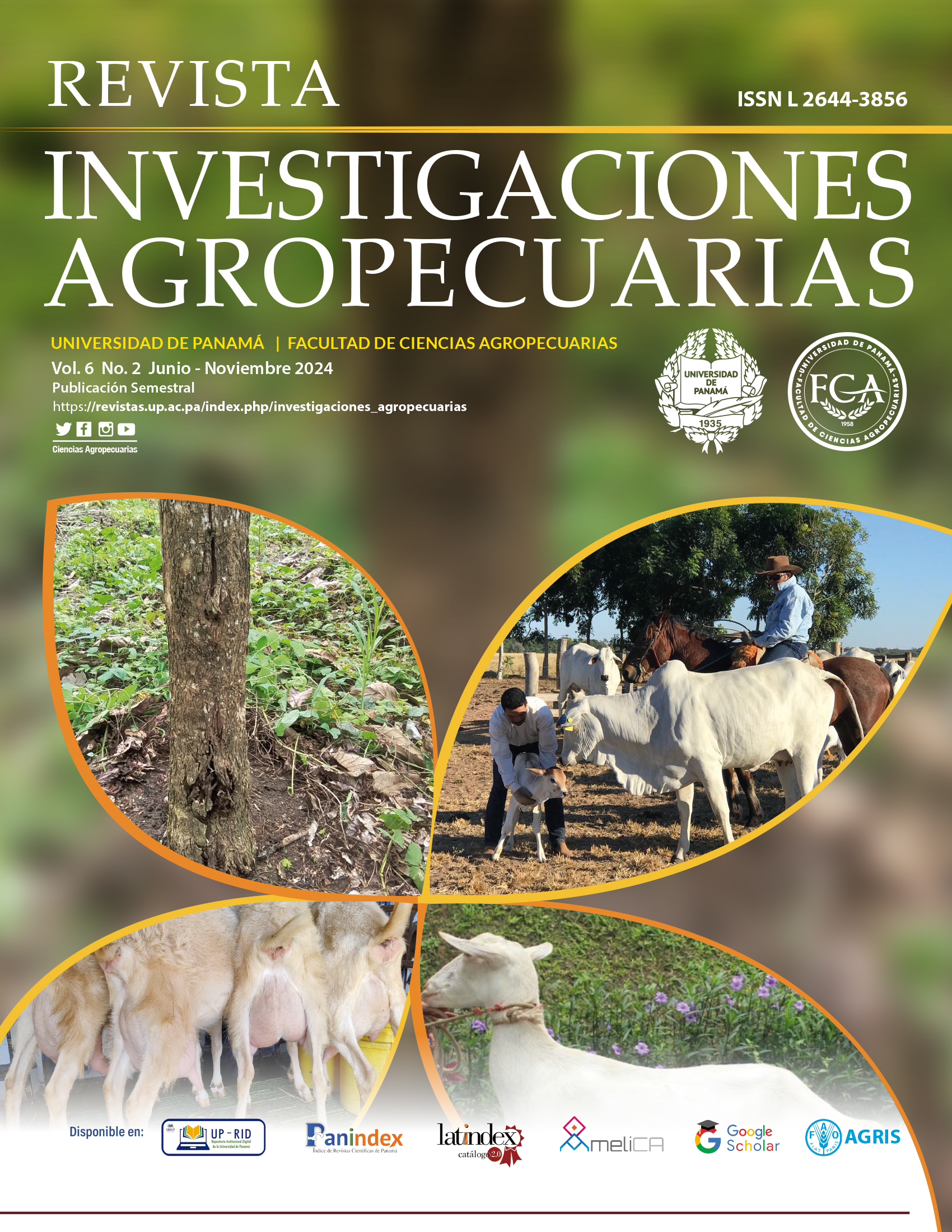

Copyright (c) 2024 Revista investigaciones agropecuarias

This work is licensed under a Creative Commons Attribution-NonCommercial-ShareAlike 4.0 International License.
In order to evaluate the effect between the applications of different doses of organic fertilizer, different doses of organic fertilizers on the growth and nutritional quality of the forage produced by the Panicum maximum cv. Miyagui, the following investigation was proposed, the following experiment was conducted at the Mexico-Panama Professional and Technical Institute located in Tanara, Chepo district, Panama Province. The geographical location corresponds to 09°08' North Latitude and 79°12' West Longitude. Five organic doses (0, 5.0, 10.0, 15.0 and 20 ton/ha) of fertilizer from chicken coop litter were evaluated. A completely randomized block experimental design with three repetitions was implemented. The area of ??the experimental plot was 4.0 m2. The variables evaluated were: plant height (cm), cover (%), dry matter yield (kg/ha), dry matter (%), crude protein (%), crude fiber (%), ash (%) and phosphorus (%). The statistical analysis showed 40 days after regrowth that no significant differences (P>0.05) were found on all the variables studied. When leaf biomass was higher,
plant height declined as a consequence of the progressive increase in dead material and stems at the 20 ton/ha dose, a similar trend occurred in cover. When the doses of organic fertilizer were increased, an increase was observed in the dry matter yield variables (0 ton/ha; 3472 kg/ha, 5.0 ton/ha; 3773 kg/ha, 10.0 ton/ha; 4033 kg/ha, 15.0 ton/ha; 4554 kg/ha and 20.0 ton/ha; 4451 ton/ha, although there were no statistically significant differences. The dry matter contents presented percentages ranging from 18.13 to 19.04%. The protein contents that were obtained in the trial fluctuated between values ??of 9.10 to 10.6 %. In all treatments, crude fiber presented ranges in the order of 12.0 to 14.60 %. The phosphorus contents derived from this study are in the range of good and considered high.